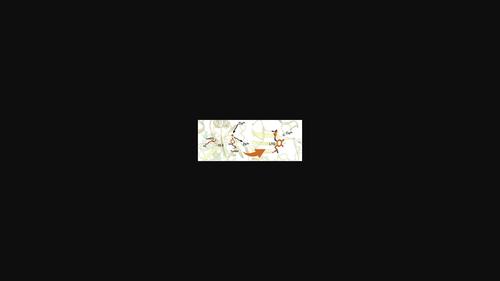当前位置:
X-MOL 学术
›
Adv. Theory Simul.
›
论文详情
Our official English website, www.x-mol.net, welcomes your feedback! (Note: you will need to create a separate account there.)
Conformation Changes Associated with the Formation and Activation of Lysine Tyrosylquinone of LOXL2 Studied by Metadynamics Simulation
Advanced Theory and Simulations ( IF 3.3 ) Pub Date : 2024-02-14 , DOI: 10.1002/adts.202300859 Yiwen Wang 1 , Lirui Lin 2 , Li‐Yan Xu 3, 4, 5 , En‐Min Li 1, 3 , Geng Dong 1, 5, 6
Advanced Theory and Simulations ( IF 3.3 ) Pub Date : 2024-02-14 , DOI: 10.1002/adts.202300859 Yiwen Wang 1 , Lirui Lin 2 , Li‐Yan Xu 3, 4, 5 , En‐Min Li 1, 3 , Geng Dong 1, 5, 6
Affiliation

|
Lysyl oxidase-like 2 (LOXL2) is a Cu2+-dependent amine oxidase that catalyzes the oxidative deamination of lysine residues of elastin and collagen to generate aldehyde groups. In the active state of LOXL2, its conserved catalytic domain has a lysine tyrosylquinone (LTQ) cofactor and a copper ion. LTQ is post-translationally derived from Lys653 and Tyr689 of LOXL2. In this study, well-tempered metadynamics simulations are used to investigate the conformation modulation from the inactive state to active state and obtain the free energy landscape. Interestingly, the simulations show that LTQ precursor residues cannot get close in Zn2+−bound LOXL2, whereas the copper ion binding triggers a conformation change to form an optional structure for LTQ biosynthesis. It is found that a prominent loop, consisting of residues 654–658, hinders the formation of LTQ in Zn2+−LOXL2 by preventing Lys653 from moving into active site of LOXL2, whereas this loop is relatively flexible in Cu2+−LOXL2. After the formation of LTQ, it needs to be activated by adjusting its position to be exposed to the solvent, thus allowing it to react with its substrate proteins. The results indicate that this process involves an intermediate state and that the activation of LTQ overcomes an energy barrier of 5.9 kcal mol−1.
中文翻译:

通过元动力学模拟研究与 LOXL2 赖氨酸酪氨酰醌形成和激活相关的构象变化
赖氨酰氧化酶样 2 (LOXL2) 是一种 Cu 2+依赖性胺氧化酶,可催化弹性蛋白和胶原蛋白赖氨酸残基的氧化脱氨基作用,生成醛基。在 LOXL2 的活性状态下,其保守催化结构域具有赖氨酸酪氨醌 (LTQ) 辅因子和铜离子。 LTQ 是翻译后衍生自 LOXL2 的 Lys653 和 Tyr689。在这项研究中,采用了良好的元动力学模拟来研究从非活性状态到活性状态的构象调制并获得自由能景观。有趣的是,模拟显示LTQ前体残基不能在Zn 2+结合的LOXL2中接近,而铜离子结合触发构象变化以形成LTQ生物合成的可选结构。研究发现,由残基 654-658 组成的突出环通过阻止 Lys653 移动到 LOXL2 的活性位点来阻碍 Zn 2+ -LOXL2 中 LTQ 的形成,而该环在 Cu 2+ -LOXL2中相对灵活。 LTQ形成后,需要通过调整其暴露于溶剂的位置来激活它,从而使其与其底物蛋白发生反应。结果表明,该过程涉及中间态,LTQ 的激活克服了 5.9 kcal mol -1的能垒。
更新日期:2024-02-14
中文翻译:

通过元动力学模拟研究与 LOXL2 赖氨酸酪氨酰醌形成和激活相关的构象变化
赖氨酰氧化酶样 2 (LOXL2) 是一种 Cu 2+依赖性胺氧化酶,可催化弹性蛋白和胶原蛋白赖氨酸残基的氧化脱氨基作用,生成醛基。在 LOXL2 的活性状态下,其保守催化结构域具有赖氨酸酪氨醌 (LTQ) 辅因子和铜离子。 LTQ 是翻译后衍生自 LOXL2 的 Lys653 和 Tyr689。在这项研究中,采用了良好的元动力学模拟来研究从非活性状态到活性状态的构象调制并获得自由能景观。有趣的是,模拟显示LTQ前体残基不能在Zn 2+结合的LOXL2中接近,而铜离子结合触发构象变化以形成LTQ生物合成的可选结构。研究发现,由残基 654-658 组成的突出环通过阻止 Lys653 移动到 LOXL2 的活性位点来阻碍 Zn 2+ -LOXL2 中 LTQ 的形成,而该环在 Cu 2+ -LOXL2中相对灵活。 LTQ形成后,需要通过调整其暴露于溶剂的位置来激活它,从而使其与其底物蛋白发生反应。结果表明,该过程涉及中间态,LTQ 的激活克服了 5.9 kcal mol -1的能垒。



























 京公网安备 11010802027423号
京公网安备 11010802027423号